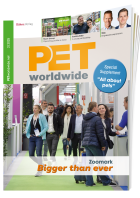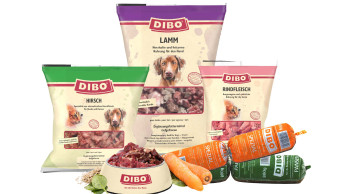The production of premium and high quality pet food requires the use of good quality raw materials. The quality of protein meals, palatants, and fresh or frozen meats is highly dependent upon the freshness of the raw materials prior to rendering or further pro-cessing. Raw materials that have their microbiological quality compromised are at risk for elevated contamination with biogenic amines. Biogenic amines are organic bases of low molecular weight possessing biological activity and are produced by decarboxylation of the corresponding free amino acid. Biogenic amines play many important roles in normal physiological functions; however, their presence in raw ingredients probably indicates microbial contamination and reduced product quality. Biogenic amines can be toxic depending upon the concentration and variety of amines present. A recent study at Kemin Nutrisurance showed that a wide range of biogenic amines can be found in pet food ingredients and finished products. Additional studies have also been completed that may link pet food consumer complaints and palatability to biogenic amine formation. Since biogenic amines survive many processing conditions, care should be taken to reduce the risk of bacterial contamination and biogenic amine formation, which is consistent with the promotion of longevity and well-being of companion animals. Key points
Biogenic amines can survive processing.
Elevated biogenic amine levels in raw ingredients or finished products most probably indicate that significant microbial deterioration of raw materials has occurred.
Biogenic amines can be an indicator of reduced raw material quality.
A wide range of biogenic amine contamination levels is observed in a variety of pet food ingredients and diets.
Controlling microbial growth can inhibit biogenic amine formation.
Biogenic amine formation has been correlated to a reduction in food consumption and/or animal illness.
Palatability can be negatively affected by biogenic amine formation.
Human guidelines suggest that 300 parts per million (ppm) of total biogenic amines would be an acceptable limit for pet food. Limiting biogenic amine formation in pet food ingredients would reduce any unidentified adverse effects on pets. Biogenic amine production can be controlled by:
Good hygiene, making sure transfer and processing equipment is clean.
A thorough quality management programme.
Limiting collection and transport times of raw materials.
Chilling or freezing raw materials that have…
Biogenic amines can survive processing.
Elevated biogenic amine levels in raw ingredients or finished products most probably indicate that significant microbial deterioration of raw materials has occurred.
Biogenic amines can be an indicator of reduced raw material quality.
A wide range of biogenic amine contamination levels is observed in a variety of pet food ingredients and diets.
Controlling microbial growth can inhibit biogenic amine formation.
Biogenic amine formation has been correlated to a reduction in food consumption and/or animal illness.
Palatability can be negatively affected by biogenic amine formation.
Human guidelines suggest that 300 parts per million (ppm) of total biogenic amines would be an acceptable limit for pet food. Limiting biogenic amine formation in pet food ingredients would reduce any unidentified adverse effects on pets. Biogenic amine production can be controlled by:
Good hygiene, making sure transfer and processing equipment is clean.
A thorough quality management programme.
Limiting collection and transport times of raw materials.
Chilling or freezing raw materials that have…

 Menü
Menü







 7-8/2010
7-8/2010









 Newsletter
Newsletter